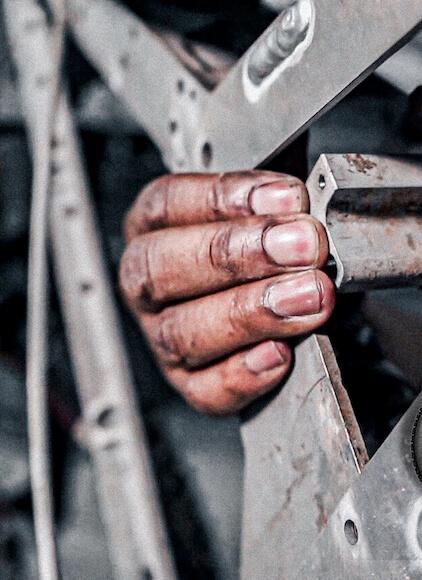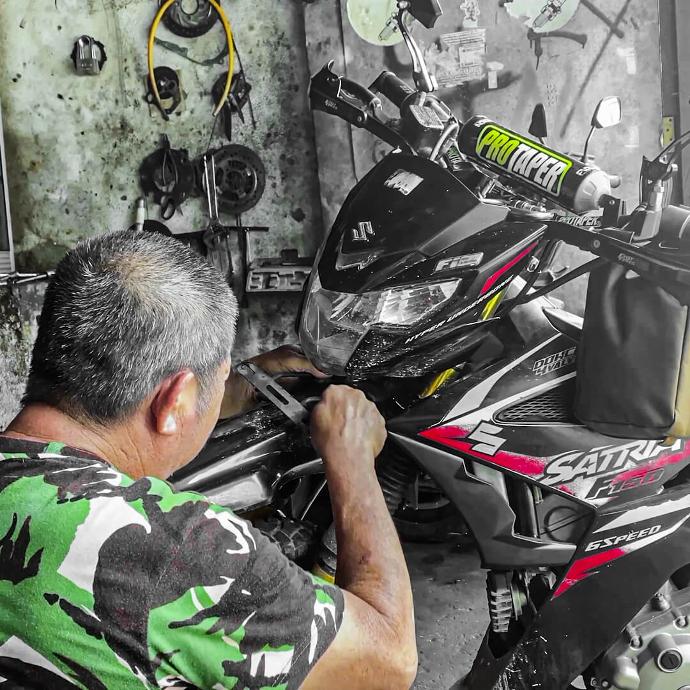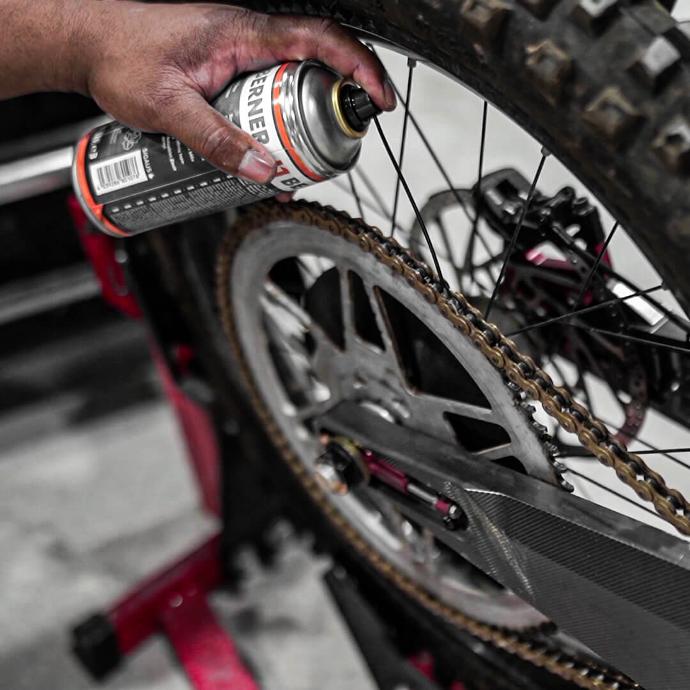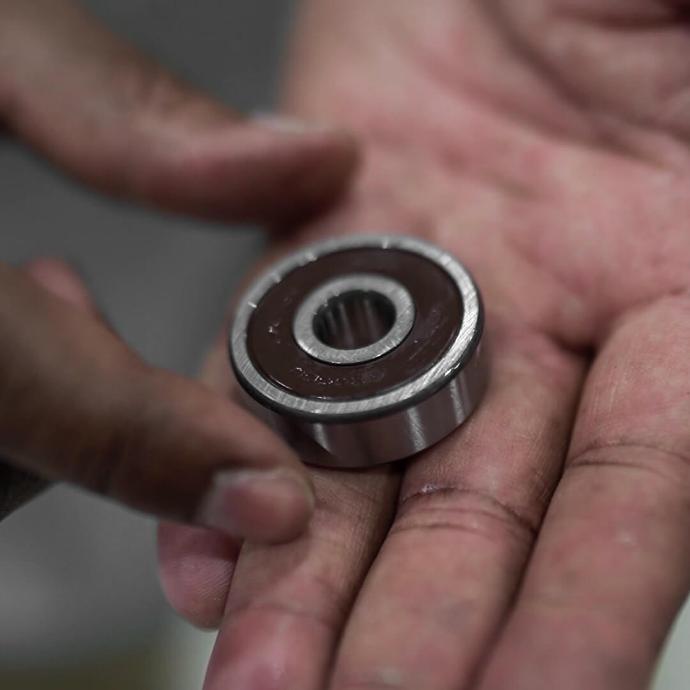Get Your Bike Dirty, Not Your Hands
Buying an off-road motorcycle is a big decision and there are many things to consider based on the kind of riding – and upkeep - you expect to do. We have intentionally designed the Graft EO.12 to be a more-ride, less-maintenance bike built for ease of use and fun rides. As we’ve covered in previous blog entries, the light weight of the bike is essential to making it accessible to a wide array of riders, who might be beginners kicking up their first dirt or seasoned riders who want to load up and take off for an afternoon ripper without the time and maintenance commitment of a gas-powered bike. For the sake of comparison, let’s take a look at what it’s really like to invest in a traditional off-road motorcycle, because it quickly becomes a very involved pastime.

Buying the Lifestyle
We’ve been riding off-road motorcycles for more than three decades, so we’ve lived the motocross lifestyle. Buying a gas-powered bike requires that in addition to the motorcycle, you will need to invest in several accompanying tools, toys, and transport to support your habit. To begin with, you’ve purchased a 240-pound machine that isn’t street legal in most places, so you’ll need to be prepared to transport it, meaning you need a truck and/or trailer (plus a buddy to get it loaded in most cases). Add to that the maintenance for a high-performance off-road motorcycle, which requires a full set of tools and the space to work on the bike plus space to store your consumable parts. Lastly, you’ll need adequate safety equipment. How much safety equipment? Well, if you’ve ever seen a baseball catcher or hockey goalie lugging their gear prior to a game, that should give you a pretty good idea of how much stuff you’ll have once you are outfitted with boots, helmets, gloves, goggles, and pads.
Tinkering Takes Time
For some newer dirt bike owners, it can be a surprise how much maintenance is truly needed to keep the machine in top shape, considering that every time out it’s taking a beating and tumbling through dirt, mud, water, and/or sand. Two stroke motorcycles, which are the most powerful, lightest, and have the most dynamic ride feel, require the most regular maintenance. Most people who commit to the lifestyle do basic maintenance themselves, meaning they invest in the technical skills, tools, space and the equipment to do the most frequent kinds of maintenance.

At the next level up, we find riders who are getting into things like bearing and piston changes for the engine, which can be as frequent as every 50 hours for a two stroke off-road motorcycle.
These take a high level of skill and a fairly extensive tool set, so many people will have them done at the dealer. But if you're riding twice a week or even more, you'll probably need to invest in the tools and equipment to do something like dissembling the engine and replacing the piston in your home every 50-100 hours and changing engine bearings maybe every 100-200 hours. That's a lot of time spent doing maintenance. Our friends who ride traditional gasoline motorcycles typically spend around one hour per ride on maintenance.
Quiet Bikes Are Busy Bikes
We want to make sure that our customers can do a 45-minute or one hour ride after work. To make this feasible, we needed to shrink service time. If you're doing a one hour ride after work and you have the typical one hour of maintenance, that's not sustainable. So our goal was to drive maintenance as low as possible. This required some creativity.
How We Achieved Minimum Maintenance
When you want to hit the trail on your EO.12, just take it off the charger, put a little anti-corrosion spray on the train, and you're ready to go. After your ride, do a quick pressure wash to get the dirt off the bike, and plug into the charger. Next, ride a little bit of WD 40 or anti-corrosion spray on the chain and you're ready. How did we reduce maintenance to this level?

The quick answer is that building ultra-lightweight, reliable vehicles inherently requires simple design. The EO.12 has just three moving parts - a motor, a chain, and a rear wheel. By reducing the component count and simplifying the design, we were able to really drive down maintenance. Off-road motorcycles and vehicles create and encounter a tremendous amount of vibration, which typically cause things to become loose.
But an electric motorcycle doesn't have engine-based vibrations, we're just dealing with trail-based vibrations. What we've done is develop all of our fasteners to use either a special European-standard locking washer or we use thread lock, meaning all of our fasteners are installed for life, and we have no issues with vibration or fasteners coming loose.
With an electric motor, we have very little maintenance on the drive. But we realized we need to design the rest of the vehicle in a unique fashion to ensure the uptime and usability matches not just the electric drivetrain, but the rest of the vehicle. We worked hard on the drivetrain to make sure we have just a single gear reduction - we don't carry any oil and no gears or secondary belts that need to be replaced or tensioned. In addition, we use a sealed O-ring chain, which is lubricated internally, permanently. Taking the low maintenance approach further, our brake system, bearing system, and even our fasteners are designed to not need attention.
Our Japanese-made bearings are oversized and we use fully-sealed bearings throughout the vehicle so there's no re-greasing or repacking of the bearing package necessary. On top of that, the EO.12 has a solid state cooling system, so there’s no radiator to refill or hoses to be mended or checked for leaks.
For typical rider who's riding once or twice every week on a two stroke, they're typically paying anywhere from 10-20% of the cost of bike in the maintenance per year. That's a significant investment in maintenance, but with the EO.12, that maintenance virtually goes to zero.
Maintaining the EO.12
Basic maintenance for the EO.12 is cleaning the bike and oiling the chain before each ride. A simple anti-corrosion oil keeps the chain from rusting on the outside. Our chains are O-ring sealed, so they're sealed for life internally, and lubrication is just on the external surfaces of the chain. The other maintenance, which is typically done around twice a year, is to check the chain tension and re-tension it, which is a simple process that can be done with three basic hand tools. The only service parts needed are brake pads and tires.

By reducing maintenance through our design choices, we have built a bike that's easy to ride and offers high levels of performance without making a huge impact on your lifestyle. It’s a bike that is suitable for casual riders, mid-level riders, and even experienced riders who want to be able to do frequent after work rides but don't have time to do all the maintenance required with a gas-powered motorcycle.
We have talked a lot in this article and others about the very specific choices we make when purchasing and machining components on our vehicles. In our next post, we will take a deep look at how Graft makes choices that keep the products sustainable while also reducing impact on the environment.